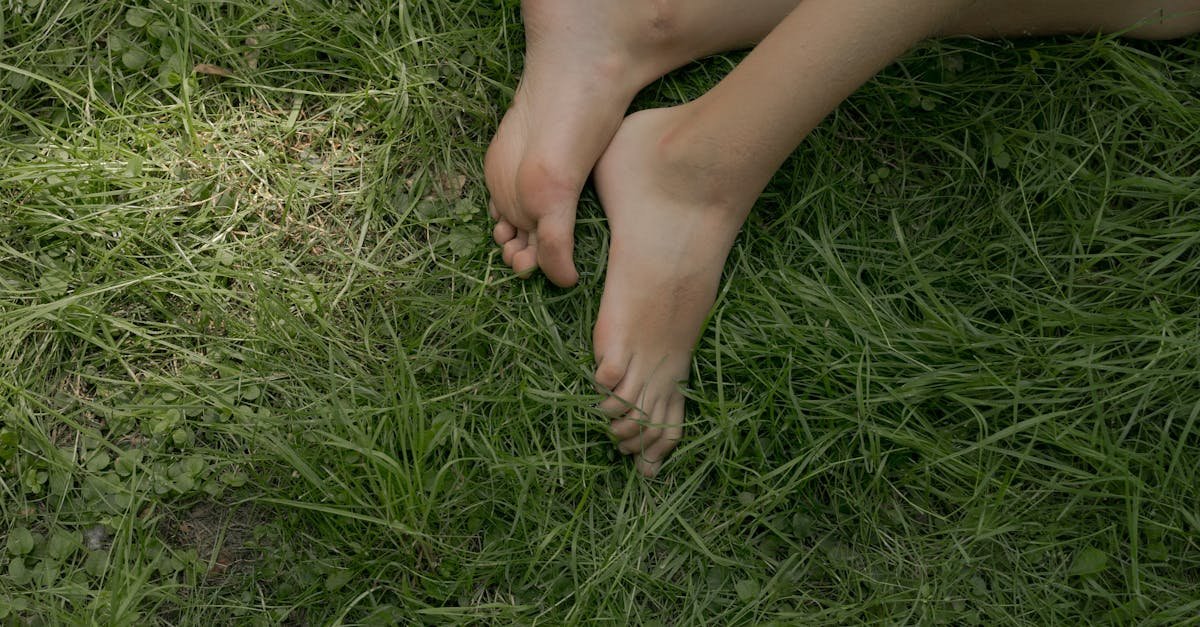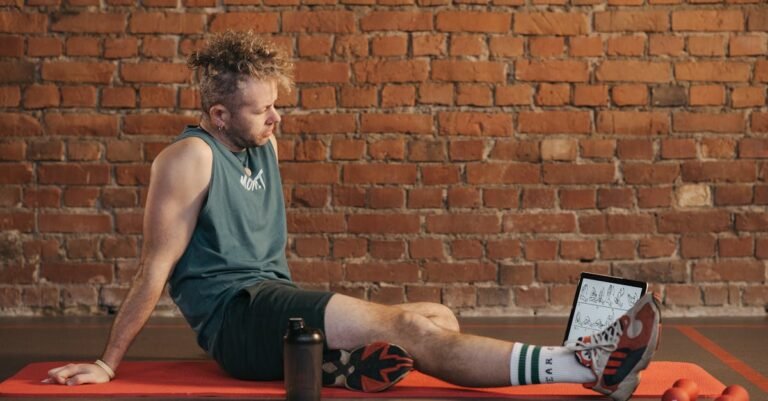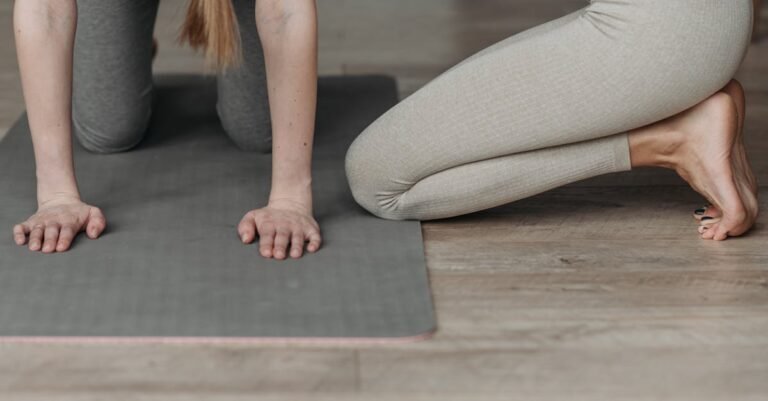Table of Contents
- Active Recovery: Gentle Moves For Rest Days
- What Exactly Is Active Recovery (And Why Bother)?
- The Amazing Benefits of Moving on Your “Off” Days
- Choosing Your Active Recovery Weapons: Gentle Exercises Galore
- Making Active Recovery Work For You: Tips and Tricks
- Common Mistakes to Avoid
- Conclusion: Embrace the Gentle Hustle
- Frequently Asked Questions (FAQs)
Active Recovery: Gentle Moves For Rest Days
Okay, let’s talk about rest days. You know, those glorious days sandwiched between tough workouts where the plan is usually… well, nothing. Binge watching your favorite show? Becoming one with the couch? Sounds tempting, right? But what if I told you that doing absolutely nothing might not be the *best* way to help your body bounce back? Enter the concept of active recovery. It sounds like an oxymoron, doesn’t it? Recovering by being… active? Stick with me, because this gentle approach to your “off” days could be the secret sauce to feeling better, faster, and getting more out of your training.
What Exactly Is Active Recovery (And Why Bother)?
So, you pushed yourself hard yesterday. Your muscles are singing (or maybe screaming?) the song of soreness. The urge to stay perfectly still is strong. But active recovery whispers a different tune. It’s about intentionally incorporating low intensity movement on your rest days or immediately following a strenuous workout. Think gentle, think purposeful, think *easy*.
Beyond the Couch: Defining Active Recovery
Active recovery isn’t about smashing another personal record or breaking a sweat like you did during your main workout. Far from it! It’s about engaging in light physical activity that stimulates blood flow to your muscles without putting significant strain on them. Imagine it as nudging your body’s natural repair processes along, rather than just letting them tick over while you’re horizontal. It’s the difference between gently coaxing a sleepy engine to life versus trying to jump start it with full throttle. The goal is to aid recovery, not add more stress.
Active vs. Passive Recovery: What’s the Difference?
This is where the couch potato method comes in – that’s passive recovery. It involves complete rest: sleeping, sitting, maybe getting a massage (which is lovely, don’t get me wrong!). Passive recovery absolutely has its place, especially getting enough sleep, which is non negotiable for repair. But active recovery involves, well, activity. Low intensity movement like walking, swimming, light cycling, or gentle yoga. Think of passive recovery as hitting the pause button, while active recovery is like hitting the slow mo button – things are still moving, just gently, helping the system clear out and reset.
The Science Bit: How Does It Actually Help?
Why does moving gently help when your muscles feel like lead? It boils down to a few key physiological processes. When you exercise intensely, your muscles experience microscopic tears (this is normal and how they get stronger!) and metabolic byproducts like lactate build up. Staying completely still can sometimes slow down the process of clearing these byproducts and delivering the nutrients needed for repair. Gentle movement, however, acts like a pump. It keeps your blood circulating effectively, delivering oxygen rich blood and nutrients to those tired muscles while helping to flush out the waste products associated with fatigue and soreness. It’s like gently rinsing out a dirty sponge instead of just letting it sit there.
The Amazing Benefits of Moving on Your “Off” Days
Okay, so we know *what* it is, but *why* should you drag yourself off the sofa for some gentle movement? The benefits are pretty compelling, trust me.
Kicking Soreness to the Curb (DOMS, Be Gone!)
Ah, DOMS. Delayed Onset Muscle Soreness. The fitness enthusiast’s frenemy. That peak soreness that hits 24 to 72 hours after a tough workout can be seriously debilitating. While active recovery might not magically erase all soreness, it can definitely take the edge off. How? By tackling it from a couple of angles.
Improving Blood Flow: Your Body’s Delivery System
Like I mentioned, gentle movement keeps your blood flowing. Think of your circulatory system as a super efficient delivery network. Increased blood flow means more oxygen and nutrients (like amino acids for muscle repair) are getting delivered to the damaged muscle tissues. It’s like sending in the construction crew with all the necessary materials right after the demolition phase. Better delivery equals faster rebuilding and less lingering achiness.
Flushing Out the Gunk: Lactic Acid and Waste Products
During intense exercise, your body produces metabolic waste products. While the role of lactic acid in *causing* DOMS is often debated and perhaps overstated (it usually clears relatively quickly post exercise), other metabolic byproducts certainly contribute to that feeling of fatigue and stiffness. Active recovery helps to enhance lymphatic drainage and circulation, essentially helping your body’s clean up crew work more efficiently to sweep away these waste materials. Think of it as helping to clear the post party mess faster so the room feels fresh again sooner.
Boosting Flexibility and Mobility
Ever feel stiff as a board the day after a hard workout? Sitting still can exacerbate that feeling. Gentle movement, especially activities like yoga, dynamic stretching, or even just some light range of motion exercises, helps to keep your joints lubricated and your muscles pliable. It prevents that ‘seizing up’ feeling and maintains, or even slightly improves, your flexibility and overall mobility. This isn’t about deep, intense stretching, but rather gentle, flowing movements that encourage your body to move through its natural range.
The Mental Game: Stress Relief and Mood Boost
Let’s not forget the brain! Exercise, even light exercise, releases endorphins – those wonderful feel good chemicals. If you’re feeling grumpy or stressed from a tough workout (or just life!), a gentle walk outdoors, a peaceful swim, or some mindful yoga can do wonders for your mood. It provides a mental break, reduces stress hormones like cortisol, and can leave you feeling refreshed and more positive, which indirectly aids physical recovery too. A happy mind often leads to a happier body.
Preventing Stiffness and Maintaining Momentum
Consistency is key in fitness, right? Sometimes, taking a completely sedentary rest day can make it harder to get back into the swing of things. You feel stiff, sluggish, and mentally less prepared for your next workout. Active recovery helps bridge that gap. It keeps your body accustomed to movement, prevents excessive stiffness, and maintains a sense of rhythm in your routine, making it easier to jump back into your harder sessions feeling prepared and less like you’re starting from scratch.
Choosing Your Active Recovery Weapons: Gentle Exercises Galore
The beauty of active recovery is that there are so many options! The key is finding something you enjoy and that feels *good* and *easy* for your body on that particular day. Remember, the intensity should be low – think 30-50% of your maximum effort.
Low Impact Cardio Champions
Low impact cardio is often the go to for active recovery because it gets the blood flowing without pounding your joints.
Walking: The Underrated Hero
Seriously, never underestimate the power of a good walk! It’s accessible, requires no special equipment, and is incredibly effective. Aim for a comfortable pace where you can easily hold a conversation. Getting outside for a walk also adds the benefits of fresh air and sunshine (hello, Vitamin D!).
Cycling: Easy Rider Style
Hopping on a bike, whether stationary or outdoors, for a gentle spin is another fantastic option. Keep the resistance low and the pace easy. Focus on smooth pedal strokes. It’s particularly good if your legs are feeling heavy, as it promotes blood flow without the impact of running or walking.
Swimming: Floating Your Way to Recovery
Swimming or even just walking/moving in the water is perhaps the ultimate low impact activity. The buoyancy of the water supports your body weight, taking stress off joints and muscles, while the water resistance provides gentle work. A relaxed swim or some water aerobics can feel incredibly soothing for sore muscles.
Mind Body Magic
These practices combine gentle movement with mindfulness, offering both physical and mental recovery benefits.
Yoga: Flowing into Flexibility
Gentle Hatha, Restorative, or Yin yoga classes are perfect for active recovery. Focus on flowing movements, holding gentle stretches (nothing forced!), and deep breathing. Avoid intense power yoga or hot yoga sessions, as these can be too demanding for a recovery day. The focus here is on mobility, relaxation, and body awareness.
Tai Chi: Moving Meditation
This ancient Chinese practice involves slow, flowing, deliberate movements combined with deep breathing. It’s incredibly gentle on the joints, promotes balance and coordination, improves circulation, and has a calming effect on the mind. It’s truly movement as meditation.
Other Gentle Giants
Beyond cardio and mind body practices, a couple of other tools can be part of your active recovery toolkit.
Foam Rolling: Your Personal Masseuse
Self myofascial release, aka foam rolling, can be a great addition. While it might feel intense in the moment, rolling out tight spots can help improve blood flow, release muscle knots, and improve tissue quality. Keep the pressure moderate and avoid rolling directly over joints or bones. Think of it as ironing out the kinks.
Dynamic Stretching: Warming Up for Rest?
Unlike static stretching (holding a stretch for a long time), dynamic stretching involves moving your body through a range of motion. Think arm circles, leg swings, torso twists. These gentle movements can help improve mobility and blood flow without the potential risks of overstretching cold, tired muscles with static holds. Keep it fluid and controlled.
Making Active Recovery Work For You: Tips and Tricks
Alright, you’re sold on the idea. How do you actually implement active recovery effectively?
Listen to Your Body: The Golden Rule
This is paramount. Active recovery should make you feel *better*, not worse. If an activity feels too strenuous, painful, or just plain wrong, stop. Some days, your body might genuinely need complete rest (passive recovery), and that’s okay too. Pay attention to your energy levels, soreness, and overall feeling.
Keep it Light: Intensity Matters
I can’t stress this enough: keep the intensity LOW. You should be able to comfortably talk throughout your active recovery session. Your heart rate should stay relatively low (think Zone 1 or low Zone 2 if you track heart rate). If you’re sweating buckets or breathing heavily, you’re likely pushing too hard and defeating the purpose. Aim for an effort level of around 3-5 on a scale of 1 to 10.
Timing is Everything: When to Do It
You have options! Some people like to do active recovery immediately after a hard workout as a cool down extension (e.g., 10-15 minutes of easy cycling after lifting weights). Others prefer to dedicate their rest days to a longer active recovery session (e.g., a 30-45 minute walk). Both approaches are valid. Experiment and see what feels best for your body and fits your schedule.
How Long Should You Go For?
Generally, aim for 20 to 40 minutes. Shorter sessions (10-15 minutes) can work as cool downs, while longer sessions are great for dedicated rest days. Don’t feel you need to go for hours; remember, the goal isn’t endurance or calorie burn, it’s promoting recovery.
Common Mistakes to Avoid
While active recovery is beneficial, it’s possible to get it wrong. Here are a few pitfalls to sidestep:
Going Too Hard: Defeating the Purpose
This is the most common mistake. Turning your active recovery session into another workout adds more stress to your body, hindering rather than helping recovery. If your “gentle jog” feels like a run, or your “easy cycle” has you gasping, dial it way back. Remember the conversational pace rule!
Skipping It Altogether: Missing Out
While listening to your body is key, don’t use “I’m tired” as an excuse every single rest day if you know some gentle movement would actually help. Often, the hardest part is getting started. Once you get moving gently, you might be surprised how much better you feel. Don’t miss out on the benefits because the couch looks too comfy.
Not Hydrating or Fueling Properly
Recovery isn’t just about movement; it’s also about nutrition and hydration. Even though active recovery is low intensity, you’re still moving and potentially sweating lightly. Make sure you’re drinking enough water throughout the day and consuming adequate protein and carbohydrates to support muscle repair and replenish energy stores. Don’t neglect these crucial pieces of the recovery puzzle.
Conclusion: Embrace the Gentle Hustle
So, there you have it. Active recovery isn’t about adding more grueling work to your plate. It’s about working *smarter*, not harder, on your days off. By incorporating gentle, low intensity movement like walking, swimming, yoga, or light cycling, you can actively support your body’s natural recovery processes. You can help reduce muscle soreness, improve flexibility, boost your mood, and ultimately, come back to your next workout feeling stronger and more prepared. Ditch the all or nothing mentality when it comes to rest days. Sometimes, a little gentle hustle is exactly what your body needs to bounce back better than ever. Give it a try – your muscles might just thank you for it!
Frequently Asked Questions (FAQs)
FAQ 1: Can active recovery replace a complete rest day?
Not necessarily. While active recovery is beneficial, sometimes your body and mind genuinely need complete rest – passive recovery. If you’re feeling exceptionally fatigued, run down, or bordering on overtraining, taking a day completely off might be more beneficial. Listen to your body’s signals; active recovery is a tool, not a mandatory replacement for true rest when needed.
FAQ 2: How soon after a hard workout should I do active recovery?
You can do it almost immediately as part of your cool down (e.g., 10-20 minutes of light cardio after strength training). Alternatively, you can do a dedicated active recovery session the day after a hard workout. Both can be effective. Some research suggests immediate post exercise light activity helps clear lactate faster, while next day activity focuses more on reducing DOMS and stiffness.
FAQ 3: Is foam rolling considered active recovery?
Yes, foam rolling and other forms of self myofascial release are often considered components of active recovery. While not aerobic activity in the traditional sense, they actively engage the muscles and fascia, aiming to improve blood flow, reduce tension, and enhance tissue recovery. It’s a great complement to low intensity movement.
FAQ 4: What if I feel more sore after active recovery?
If you feel significantly more sore after an active recovery session, it’s a strong indicator that you likely went too hard or did too much. Remember, the intensity should be very light. Dial it back next time – choose a gentler activity, reduce the duration, or lower the intensity further. It should leave you feeling refreshed or neutral, not beat up.
FAQ 5: Can I do active recovery every day?
You could potentially incorporate some form of very light active recovery daily, such as a short walk or some gentle stretching. However, ensure it doesn’t interfere with your harder training days or replace necessary passive rest. If your main workouts are very intense, ensure your active recovery days are genuinely low effort and don’t contribute to overall fatigue. Again, listen to your body – daily might be fine for some, but too much for others.










